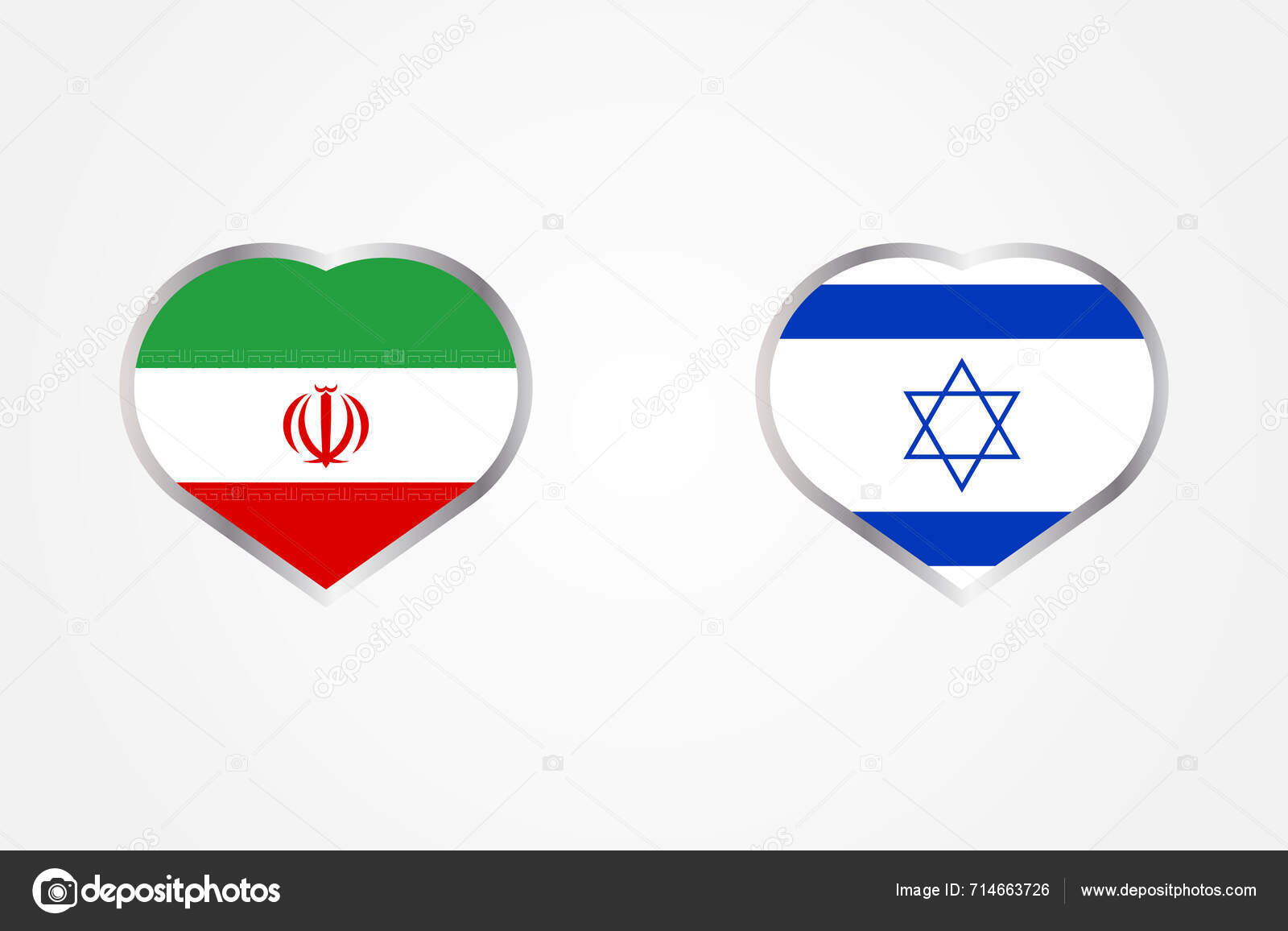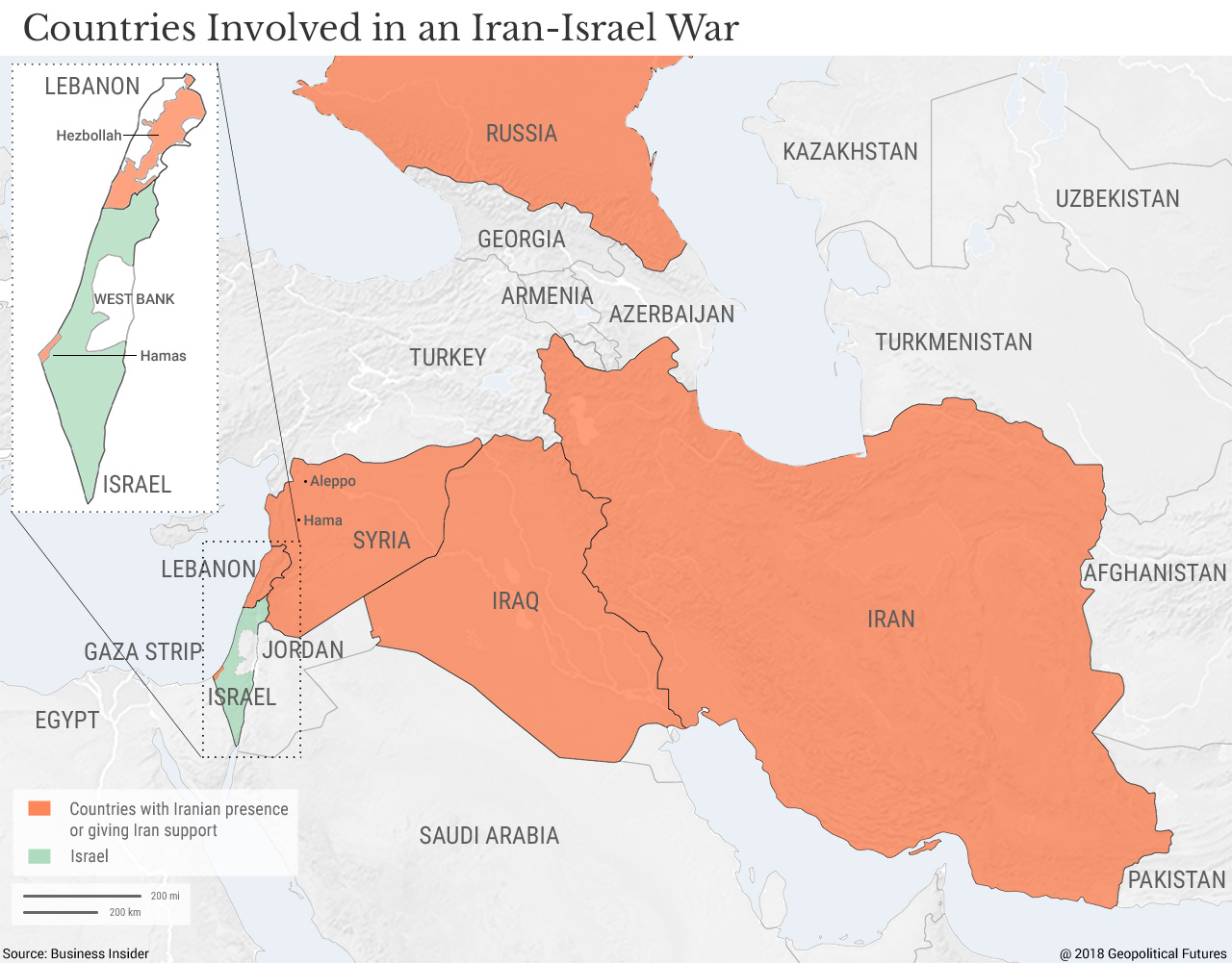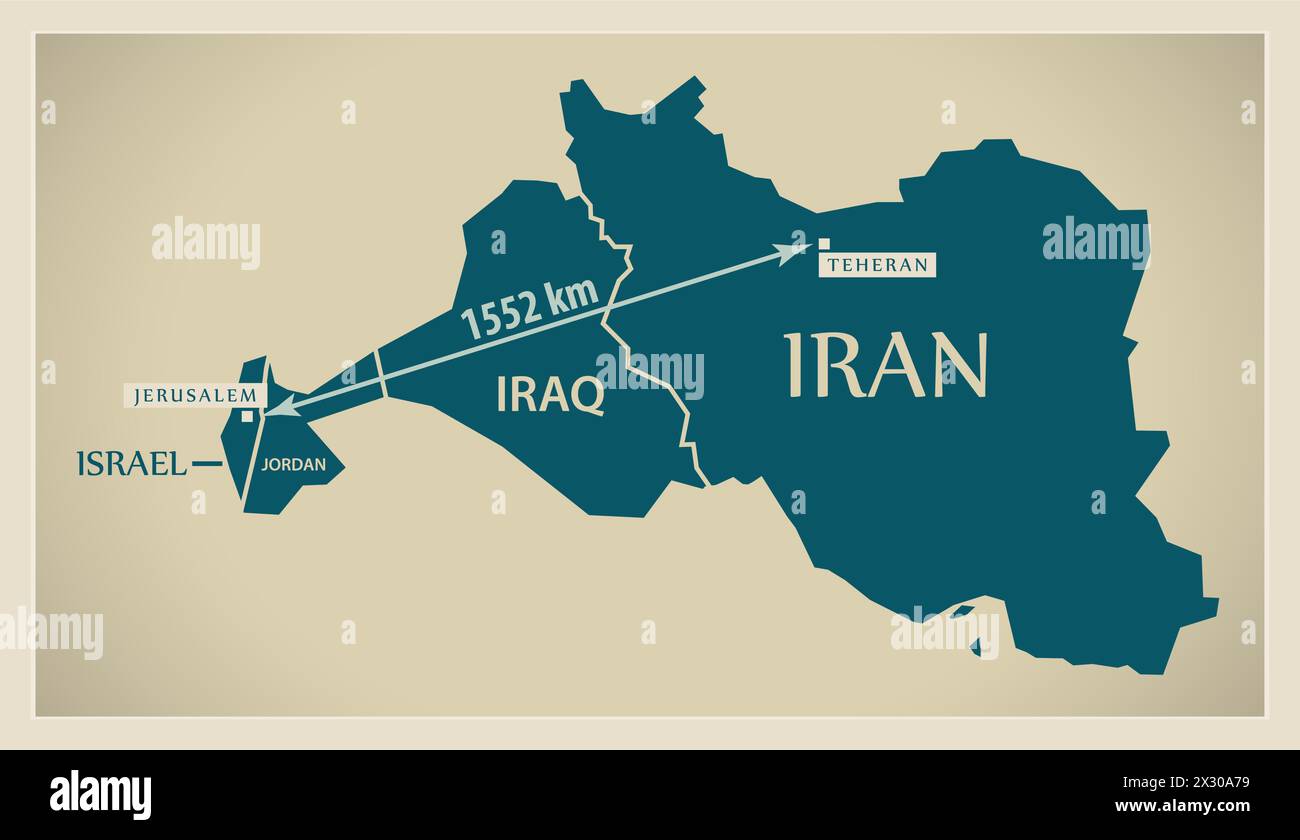The Miles Between: Unpacking The Distance Israel Iran Geopolitical Divide
The geographical expanse separating nations often serves as more than just a physical measurement; it's a canvas upon which geopolitical narratives are painted, strategies are formulated, and perceptions are shaped. When we talk about the "distance Israel Iran miles," we're delving into a complex web of historical animosity, strategic calculations, and regional power dynamics. This seemingly simple numerical value holds profound implications for the Middle East and, by extension, global stability.
Understanding the actual miles that lie between Israel and Iran is merely the starting point. The true depth of this topic lies in how this distance influences everything from military doctrines and diplomatic maneuvers to the very perception of threat and security in a volatile region. It's a distance that, while measurable on a map, is constantly being redefined by technological advancements, proxy conflicts, and the ever-shifting sands of international relations.
Table of Contents
- The Geopolitical Significance of Distance: Understanding Israel-Iran Dynamics
- Calculating the "Distance Israel Iran Miles": More Than Just a Number
- The Concept of Distance Beyond Geography
- Historical Context: Shaping the Israel-Iran Relationship
- Strategic Implications of the Distance
- The Human Element: Perceptions and Proximity
- The Role of International Diplomacy in Bridging Distances
- Future Outlook: Navigating the Geopolitical Landscape
The Geopolitical Significance of Distance: Understanding Israel-Iran Dynamics
The relationship between Israel and Iran is one of the most fraught and closely watched geopolitical rivalries in the modern world. While they do not share a direct border, the "distance Israel Iran miles" is a critical factor in how each nation perceives the other as a threat and how they formulate their respective defense and foreign policies. This geographical separation, rather than fostering isolation, has often spurred a competition for regional influence, manifesting in proxy conflicts, cyber warfare, and a persistent war of words.
For both nations, understanding this distance is not just an academic exercise; it's a matter of national security. Israel, a relatively small nation, is acutely aware of its surroundings, and Iran's growing military capabilities and regional ambitions are viewed through the lens of this geographical separation. Conversely, Iran, a larger country with a rich historical legacy, views Israel as a Western-backed adversary in its quest for regional hegemony. The miles between them are therefore filled with strategic considerations, from missile ranges to air defense capabilities, and the potential for any miscalculation to escalate tensions dramatically.
Calculating the "Distance Israel Iran Miles": More Than Just a Number
To put a precise figure on the "distance Israel Iran miles" requires specifying the start and end points. Typically, when discussing the geographical separation between two countries, we refer to the distance between their respective capitals or major strategic points. For instance, the approximate air line distance between Tehran, Iran's capital, and Jerusalem, Israel's capital, is roughly 1,000 to 1,100 miles (approximately 1,600 to 1,770 kilometers). This figure, often derived from advanced mapping tools and global positioning systems, represents the shortest possible path between these two points, a straight line across the earth's surface.
Online tools, much like the "worldwide distance calculator with air line, route planner, travel duration and flight distances" mentioned in various contexts, can quickly provide this numerical value. These calculators are designed to "simply enter any desired location into the search function and you will get the shortest" distance, often displaying the route on an interactive map. However, as we will explore, this straight-line measurement is just one facet of a much larger, more intricate geopolitical reality. The terms for each viewing distance 'category' don't need to be dimensionally precise in all contexts, but in geopolitical terms, precision matters when it comes to military capabilities.
Air Line Distance vs. Practical Routes
While the air line distance gives us a baseline, it rarely reflects the practical reality of travel or military engagement. Just as "Manhattan Distance," also known as "street block distance" or "L1 distance," provides a different perspective on travel within a grid-like city by measuring paths along streets rather than through buildings, the geopolitical distance between Israel and Iran is not a simple straight line. Actual flight paths or land routes would need to navigate through or around other countries' airspace or territories, adding significant miles and complexity.
For instance, an aircraft traveling from Tehran to Jerusalem would likely need to traverse Iraqi and Jordanian airspace, assuming diplomatic clearance. This makes the "shortest distance" on a map a theoretical concept, while the practical route is influenced by international law, diplomatic relations, and the presence of air defense systems. This distinction is crucial for military strategists assessing the feasibility of operations and the range required for various assets. The "route planner" feature of distance calculators, while often used for civilian travel, underscores the importance of actual pathways over theoretical straight lines in strategic planning.
The Concept of Distance Beyond Geography
The notion of "distance" extends far beyond mere physical separation. In the context of Israel and Iran, it encompasses ideological, political, and cultural chasms. Consider the nuanced difference between "at the distance" and "at a distance." "At a distance" is most commonly used where the distance is stated, such as "I could see him at a distance of 35 km," implying a specific, measurable separation. Conversely, "in the distance" often suggests something vaguely far away, perhaps looming or approaching, without a precise measurement. Both apply to the Israel-Iran dynamic: the precise "distance Israel Iran miles" is known, but the perceived threat can feel "in the distance" yet ever-present.
The requirements for strategic planning "change depending on the viewing distance between the product and the audience." In geopolitics, the "product" might be a military capability or a political stance, and the "audience" could be a neighboring state, an adversary, or the international community. How Israel views Iran's nuclear program, for example, depends on its "viewing distance"—its intelligence capabilities, its strategic priorities, and its perception of the immediacy of the threat. A threat "far from" one's borders might be perceived differently than one that feels "far to" a target, implying an aggressive intent.
Even the concept of "walking distance," while literally meaning a short, traversable distance, can be used metaphorically. While Jerusalem is certainly not "walking distance from" Tehran, the influence of proxy groups or cyber warfare can make the impact of a distant adversary feel much closer, almost as if their reach is within "walking distance of" one's critical infrastructure or public sentiment. This highlights how non-physical means can bridge vast geographical distances, making the "miles" less relevant in certain dimensions of conflict.
Historical Context: Shaping the Israel-Iran Relationship
The current animosity between Israel and Iran is a relatively modern phenomenon, largely emerging after the 1979 Iranian Revolution. Prior to this, under the Shah's rule, Iran and Israel maintained discreet but cooperative relations, driven by shared strategic interests in the region. Both viewed Arab nationalism and Soviet influence as common threats. This historical period demonstrates that the "distance Israel Iran miles" was once a space for strategic alignment, not just antagonism.
However, the Islamic Revolution fundamentally altered Iran's foreign policy, transforming it into an anti-Zionist and anti-Western state. The new Iranian regime adopted a strong pro-Palestinian stance, viewing Israel as an illegitimate entity and a proxy for American influence in the Middle East. This ideological shift, coupled with Iran's pursuit of nuclear capabilities and its support for various non-state actors like Hezbollah and Hamas, cemented the rivalry. The geographical "distance Israel Iran miles" became less about physical separation and more about the ideological chasm that defined their new relationship, fueling a proxy war that spans the region.
Strategic Implications of the Distance
The "distance Israel Iran miles" profoundly impacts the strategic calculations of both nations. For Israel, the geographical separation means that any direct military confrontation would likely involve long-range aerial operations, missile strikes, or special forces deployments. This necessitates advanced intelligence, surveillance, and reconnaissance (ISR) capabilities, as well as sophisticated air defense systems to counter potential retaliatory strikes. The ability to project power over such a distance is a key component of Israel's defense doctrine.
For Iran, the distance also presents challenges and opportunities. While direct ground invasion is impractical, the development of long-range missiles and drones becomes a crucial element of its deterrence strategy. Furthermore, the ability to cultivate and support proxy groups in neighboring countries (like Lebanon, Syria, and Gaza) allows Iran to project influence and exert pressure on Israel without needing to bridge the physical "distance Israel Iran miles" directly. These proxies effectively shorten the operational distance, creating a contiguous arc of influence that bypasses geographical barriers.
Missile Ranges and Strategic Depth
The development of missile technology is directly tied to the "distance Israel Iran miles." Both nations possess missile arsenals capable of reaching each other's territories. Iran's ballistic missile program, in particular, is a source of significant concern for Israel and its allies. These missiles, designed to travel hundreds or even thousands of miles, effectively nullify the protective buffer of geographical separation. This makes the concept of "strategic depth" critical – how much territory and time a nation has to absorb an attack and respond.
Israel's multi-layered missile defense systems, such as Iron Dome, David's Sling, and Arrow, are designed precisely to counter threats from various ranges, including those that would traverse the "distance Israel Iran miles." The ongoing arms race in missile technology and defense systems underscores how this physical distance continues to drive military innovation and strategic planning in the region. The ability to strike targets at such distances fundamentally alters the calculus of conflict, making pre-emptive strikes and rapid retaliation key considerations.
Proxy Conflicts and Regional Reach
Perhaps the most significant way Iran bridges the "distance Israel Iran miles" is through its network of proxy groups. By supporting and arming non-state actors like Hezbollah in Lebanon, various militias in Syria and Iraq, and Hamas and Palestinian Islamic Jihad in Gaza, Iran extends its reach directly to Israel's borders. These groups act as forward operating bases, allowing Iran to exert pressure, gather intelligence, and launch attacks without directly engaging its own military forces. This strategy transforms the geographical distance into a network of interconnected battlefields.
These proxy conflicts make the "middle point between two cities" (Israel and Iran) a fluid and contested space, often occurring in third countries. The question of "where to meet in the middle" or "where the center is" between these two powers is answered not by geography but by the locations of these proxy battles. This strategy allows Iran to inflict costs on Israel and challenge its security without risking a direct, full-scale war that would require traversing the actual "distance Israel Iran miles" with its own conventional forces.
The Human Element: Perceptions and Proximity
Beyond military and political calculations, the "distance Israel Iran miles" also influences public perception and the psychological dimension of the rivalry. For the average citizen in both countries, the other nation might feel "far from" their daily lives, yet the constant media coverage, political rhetoric, and regional tensions ensure that the perceived threat is never truly out of mind. The question "far from is used to talk about the distance between two or more places, while far to implies that one is trying to get from one place to" becomes relevant here. Is the other side merely "far from" them, or are they seen as actively moving "far to" them with hostile intent?
The language used to describe the other nation often emphasizes distance in terms of ideology and intent, rather than just geography. For instance, Iranian leaders frequently refer to Israel as the "Zionist entity," a term designed to delegitimize its existence and create a conceptual distance. Conversely, Israeli leaders often portray Iran as a radical regime, emphasizing its ideological departure from international norms. These linguistic strategies aim to shape public opinion and justify policies, making the "distance Israel Iran miles" not just a physical reality but a deeply ingrained psychological barrier.
The Role of International Diplomacy in Bridging Distances
Given the significant "distance Israel Iran miles" and the complex geopolitical landscape, international diplomacy plays a crucial role in managing tensions and preventing escalation. Organizations like the United Nations, as well as major global powers, often attempt to mediate disputes or establish channels of communication, even if indirect. The goal is to create a "middle point" for dialogue, even when direct talks seem impossible. This involves efforts to de-escalate rhetoric, negotiate agreements (such as the Iran nuclear deal, JCPOA), and enforce international norms.
However, the effectiveness of diplomacy is often hampered by the deep-seated mistrust and conflicting interests between Israel and Iran. While international actors strive to bridge the "distance" through negotiation, both nations often view such efforts through the lens of their own security imperatives and regional ambitions. The challenge for diplomacy is to find common ground or at least establish clear red lines that prevent miscalculation, even when the underlying ideological and strategic distances remain vast.
Future Outlook: Navigating the Geopolitical Landscape
The "distance Israel Iran miles" will continue to be a defining factor in the Middle East's geopolitical future. As technology advances, particularly in areas like long-range precision weaponry, cyber warfare, and drone capabilities, the traditional significance of geographical distance may evolve. A nation's ability to project power and influence is no longer solely dependent on physical proximity, making the "miles" a less absolute barrier than in previous eras.
The future of the Israel-Iran relationship will likely be characterized by continued strategic competition, possibly punctuated by periods of heightened tension or proxy conflicts. The international community will remain vigilant, attempting to prevent direct confrontation while navigating the complex web of alliances and rivalries. Understanding the multifaceted nature of the "distance Israel Iran miles"—not just as a number but as a dynamic force shaping perceptions, strategies, and conflicts—is essential for anyone seeking to comprehend the intricate dynamics of the Middle East.
The precise measurement of the "distance Israel Iran miles" provides a geographical anchor, but the true understanding of this relationship lies in appreciating the layers of historical context, strategic implications, and human perceptions that fill the space between them. It is a distance that is constantly being traversed, challenged, and redefined by the relentless currents of geopolitics.
We hope this comprehensive look into the "distance Israel Iran miles" has provided valuable insights into one of the world's most critical geopolitical rivalries. What are your thoughts on how geographical distance influences international relations? Share your perspectives in the comments below, and don't forget to explore our other articles on regional security and global diplomacy.

Iran Israel War Israel Iran Hearts Concept Flags Iran Israel Stock

Israel and Iran Prepare for Conflict - Geopolitical Futures

Modern Map - Distance between Jerusalem ISRAEL and Teheran IRAN Stock